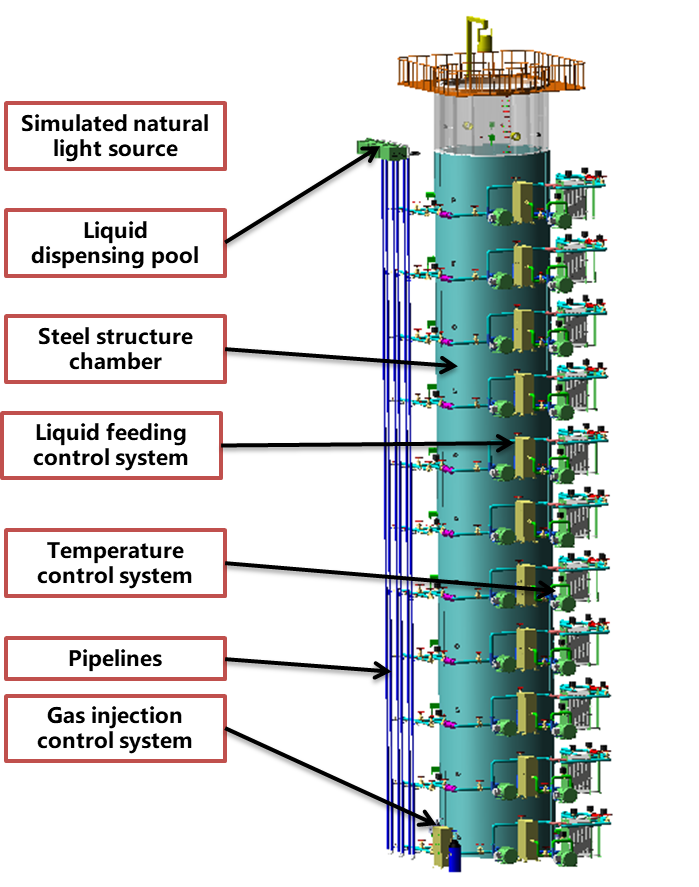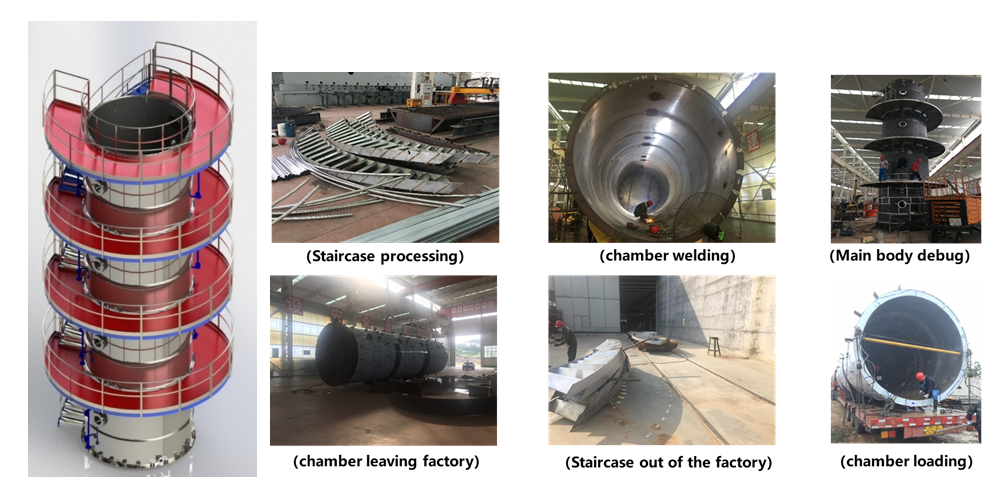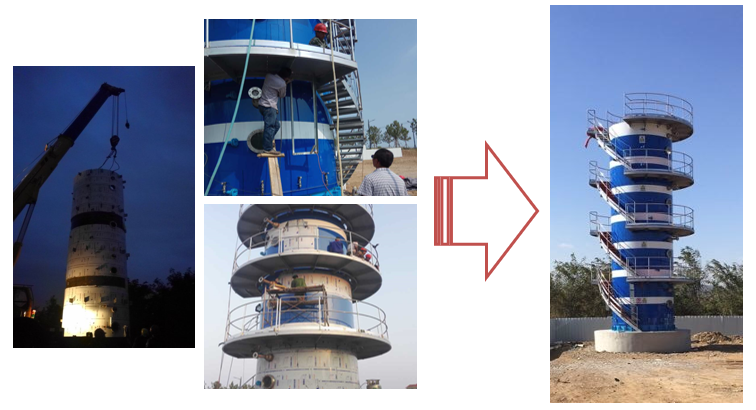The implementation of the ocean negative emissions scheme depends on the in-depth study of the processes and mechanisms related to marine ecology and environmental change. Marine environment and climate change is a major research topic including natural processes and human activities. It requires multi-disciplinary, multi field, cross time and space, cross industry / department coordination in order to achieve breakthrough and innovation. The research focus on the processes and mechanisms related to marine ecology and environmental change should gradually change from qualitative to quantitative, and from laboratory scale to mesoscale and global scale. Based on the above realities and needs, an experimental system with controllable boundary parameters and capable of simulating marine climate environment will help us to carry out relevant research.

Figure 1. MECS Simulation chamber
The MECS(Marine Environmental Chamber System)in design contains the simulation module system and the treatment system of sea water. The main equipment of the system is at least six large-scale experimental cabins embedded in the building, as well as the corresponding control system, detection system, equipment monitoring and information network system, and safety monitoring system. The treatment system of sea water includes sea water extraction station, seawater pretreatment station, water pressure pump station, waste water treatment station.The body of the system can carry water and fix the instruments. The height of the chamber is 50 meters, inner diameter is 8 meters. The chamber is divided to 12 sections,every section can be independently controlled. MECS provides an important platform for the clean water test of marine equipment and sensors and the research and development of marine ecological engineering.

Figure 2. Structure of Mini-MECS Figure 3. Construction process of Mini-MECS
Mini-MECS system(the inside diameter is 3.2 m, the height is 12.5m)built in in Shandong University is a small-scale device designed for verification of MECS construction scheme, including three main parts of simulation module, control system and monitoring system and other facilities such as water treatment system, and can partially realize some physicochemical parameters (like temperature and pH value) control and experimental targets (like particulate matter deposition) for which MECS is designed.

Figure 4. Overall completion of Mini-MECS
Mini-MECS adopts spiral stairs to facilitate experimenters. When Mini-MECS is full of water, its total weight is 177 ton. It is planned to build a fixed water intake at the seaside and take water directly from the ocean to meet the engineering requirements. The designed water lifting capacity is 1000 cubic meters per day.
MECS is a major scientific project of Marine science, and it is an important measure to focus on the frontier of marine science and technology, seize the commanding height of the academic, and create the discipline of the subject. Upon completion, MECS will lead the new hotspot of global marine science development and will become the new center of ocean negative emission research.
(Edited by Jihua Liu, Chengda Li)
(Editing Contact:xjz@xmu.edu.cn)